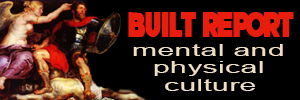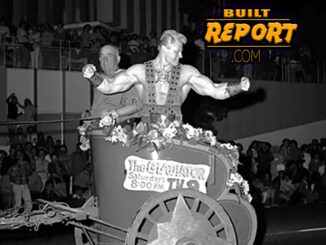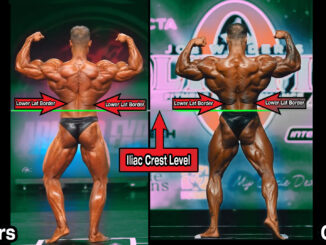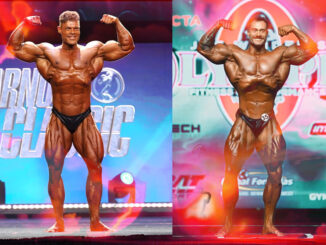
Jurassic Gorilla https://jurassicgorilla.com

In the vast and intricate world of fantasy literature, one name stands out, a name that evokes images of a mighty warrior, fierce battles, and epic adventures: Conan the Barbarian. This iconic character was born from the vivid imagination of author Robert E. Howard in 1932 and found his early home in the pages of the pulp magazine, Weird Tales.
Conan, in his original incarnation, was a character of immense physical prowess. A towering figure with a robust physique, he was undoubtedly a strong and muscular individual. However, it’s important to acknowledge that the concept of a bodybuilder, as we understand it today, didn’t exist in the early 1930s. This was a time when the world of physical culture and bodybuilding was still in its nascent stages.
The late 1800s had introduced the world to the likes of Eugene Sandow, a pioneering figure in the realm of physical culture. He was renowned for his impressive physique and feats of strength, captivating audiences around the world. Charles Atlas, another significant figure, began selling his bodybuilding course in 1922, contributing to the growing awareness of physical fitness and exercise.
The first inkling of organized bodybuilding competitions, like the Mr. America contest, didn’t emerge until 1938. This was an era when bodybuilding was just beginning to find its footing as a legitimate sport, and steroids, which would later become synonymous with the pursuit of massive muscle development, were still in their infancy.
The history of steroids, as we understand them today, can be traced back to 1931 when German chemist Adolf Butenandt made a groundbreaking discovery. While it was already known, largely thanks to Berthold, that male hormones played a significant role in the body, it was Butenandt who managed to isolate and purify the hormone androstenone. This achievement marked the beginning of the journey that would eventually lead to the birth and evolution of anabolic steroids.

The earliest artistic depictions of Conan, as described by Robert E. Howard, can be found on the covers of Weird Tales magazine. These illustrations were a visual interpretation of Howard’s vivid descriptions of the character. Howard painted a picture of Conan as:
“… a tall man, mightily shouldered and deep of chest, with a massive corded neck and heavily muscled limbs. He was clad in silk and velvet, with the royal lions of Aquilonia worked in gold upon his rich jupon, and the crown of Aquilonia shone on his square-cut black mane; but the great sword at his side seemed more natural to him than the regal accoutrements. His brow was low and broad, his eyes a volcanic blue that smoldered as if with some inner fire. His dark, scarred, almost sinister face was that of a fighting-man, and his velvet garments could not conceal the hard, dangerous lines of his limbs.”

In the 1950s, fans of Howard’s Conan stories began compiling the original tales into small press hardback books with limited print runs. During this era, the physical depiction of Conan retained elements of the original Weird Tales illustrations but also incorporated a Roman influence.

The 1940s saw the emergence of bodybuilders like John Grimek and Steve Reeves, who laid the foundation for the modern bodybuilder. By the 1950s, bodybuilders like Reg Park, Earl Maynard, and Bill Pearl began to emerge, showcasing more developed and muscular physiques. As the 1960s unfolded, bodybuilding was gaining momentum, and steroid use was becoming more prevalent.
However, it wasn’t until the late 1960s that a significant shift occurred in the visual portrayal of Conan, thanks to the imaginative artwork of illustrator Frank Frazetta. Frazetta’s interpretation of Conan, created for the Lancer/Ace paperback editions of “Conan the Barbarian,” transformed the character into a more muscular, imposing, and fierce-looking warrior. Interestingly, Frazetta reportedly didn’t read the books; instead, he relied on his artistic intuition and vision of how the characters should look based on his own knowledge.
Frazetta was known for his muscular characters, animals, and what became famously known as “Frazetta girls” — voluptuous and enchanting women. His artistic vision left an indelible mark on the portrayal of Conan, one that still resonates today.

In the 1970s, as Conan’s popularity expanded into the realm of comic books, his appearance continued to evolve. However, Frazetta’s vision remained a powerful influence, shaping the enduring image of Conan as a muscular, unyielding, and fearsome character. The character’s development extended into other forms of media, including movies and television, and would continue to captivate audiences for generations to come.
The tale of Conan’s evolution in the world of literature, comics, film, television, and beyond is a fascinating journey through artistic interpretation and cultural significance, making him a timeless and iconic figure in the world of fantasy.





Be the first to comment